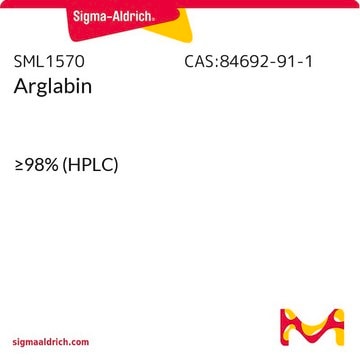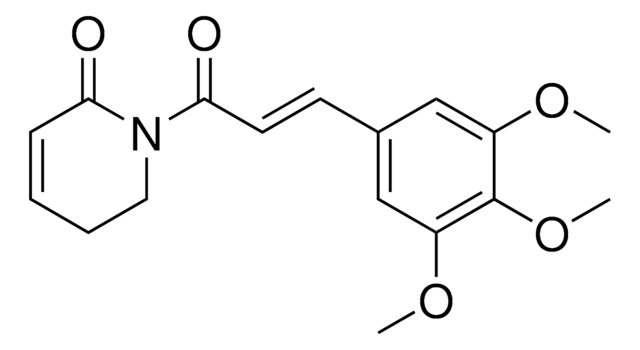P0667
Parthenolide
≥98% (HPLC)
About This Item
Productos recomendados
assay
≥98% (HPLC)
form
powder
mp
115-116 °C (lit.)
storage temp.
2-8°C
SMILES string
C/C(CC[C@]12[H])=C/CC[C@]3(C)[C@H](O3)[C@]1(OC(C2=C)=O)[H]
InChI
1S/C15H20O3/c1-9-5-4-8-15(3)13(18-15)12-11(7-6-9)10(2)14(16)17-12/h5,11-13H,2,4,6-8H2,1,3H3/b9-5-/t11-,12-,13+,15+/m0/s1
InChI key
KTEXNACQROZXEV-ZRPLFPEYSA-N
Gene Information
human ... ELA2(1991) , IKBKG(8517) , NFKB1(4790) , NKAP(79576) , NKRF(55922)
¿Está buscando productos similares? Visita Guía de comparación de productos
Application
- in the crystallization with vasohibin 1 (VASH1) to study tubulin detyrosination inhibition
- as an inhibitor of nuclear factor κ-light-chain-enhancer of activated B cells (NF-κB) and signal transduction and activation of transcription (STAT) inhibitor to study its effects on the cytoadhesion of CD36-binding Plasmodium falciparum-infected erythrocytes (IECD36)
- as a lipophilic agent to study its effects on the production of interleukin?13 and interferon?γ by peripheral blood-derived CD8+ T cells
Biochem/physiol Actions
Other Notes
signalword
Warning
hcodes
pcodes
Hazard Classifications
Skin Sens. 1
Storage Class
11 - Combustible Solids
wgk_germany
WGK 3
flash_point_f
Not applicable
flash_point_c
Not applicable
ppe
Eyeshields, Gloves, type N95 (US)
Certificados de análisis (COA)
Busque Certificados de análisis (COA) introduciendo el número de lote del producto. Los números de lote se encuentran en la etiqueta del producto después de las palabras «Lot» o «Batch»
¿Ya tiene este producto?
Encuentre la documentación para los productos que ha comprado recientemente en la Biblioteca de documentos.
Los clientes también vieron
Artículos
Chronic inflammation is an underlying factor in the development and progression of many of the chronic diseases of aging, such as arthritis, atherosclerosis, diabetes, and cancer.
Cancer stem cell media, spheroid plates and cancer stem cell markers to culture and characterize CSC populations.
Nuestro equipo de científicos tiene experiencia en todas las áreas de investigación: Ciencias de la vida, Ciencia de los materiales, Síntesis química, Cromatografía, Analítica y muchas otras.
Póngase en contacto con el Servicio técnico















